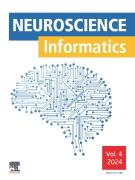An automated measurement of head circumference using CT scans: An application in children with head abnormalities - 04/07/25

 , Rafael Maffei Loureiro b, Lucas dos Anjos Longas a, Fabio Augusto Ribeiro Dalpra b, Luigi Villanova Machado de Barros Lago a, Larissa Vasconcellos de Moraes a, Paulo Cesar Filho Estevam a, Luiz Otávio Vittorelli a, Lucas Silva Kallás a, Ana Paula Antunes Pascalicchio Bertozzi c, Maria Isabel Barros Guinle a, d, Gilberto Szarf a, b, Saulo Duarte Passos c, Birajara Soares Machado a, Joselisa Péres Queiroz De Paiva a
, Rafael Maffei Loureiro b, Lucas dos Anjos Longas a, Fabio Augusto Ribeiro Dalpra b, Luigi Villanova Machado de Barros Lago a, Larissa Vasconcellos de Moraes a, Paulo Cesar Filho Estevam a, Luiz Otávio Vittorelli a, Lucas Silva Kallás a, Ana Paula Antunes Pascalicchio Bertozzi c, Maria Isabel Barros Guinle a, d, Gilberto Szarf a, b, Saulo Duarte Passos c, Birajara Soares Machado a, Joselisa Péres Queiroz De Paiva aAbstract |
Manual measurement of head circumference has been a widely adopted method of neurodevelopmental evaluation in both clinical and research settings. Here, we propose a method that uses axial slices of computerized tomography (CT) scans to detect the largest outer margin for measurement. Our method can both complement conventional tape measurements or be applied as a standalone tool, especially in the context of retrospective big data analysis. We applied our algorithm in a set of 74 head CT scans obtained from individual children (8,5 ± 14,1 months old). The method proved to be concordant , consistent (
= 1), and showed a correlation of 0.988 compared to obtaining manual head circumferences by specialists. Our method is a reliable alternative to conventional manual measurements of head circumference. It can be readily applied in macrocephaly and microcephaly screening studies and in growth reference charts for syndromes related to head alterations.
Graphical abstract |
Highlights |
• | We proposed an automated pipeline for measuring head circumference (HC) directly from axial head CT slices using only open-source tools. |
• | Our method was validated radiologically and clinically on a heterogeneous multicenter pediatric dataset (n = 74) with normal and abnormal HC cases. |
• | Validation results showed high agreement, consistency, and correlation with radiological and clinical HC measurements obtained by specialists. |
• | The method is useful for retrospective clinical and public health applications, where CT scans are available but manual HC data are unfeasible. |
Keywords : Occipito-frontal circumference, Skull circumference, Microcephaly, Computed tomography, Macrocephaly, Neurodevelopment
Plan
Vol 5 - N° 3
Article 100217- septembre 2025 Retour au numéroBienvenue sur EM-consulte, la référence des professionnels de santé.

